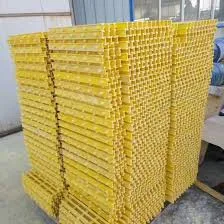
-
 Afrikaans
Afrikaans -
 Albanian
Albanian -
 Amharic
Amharic -
 Arabic
Arabic -
 Armenian
Armenian -
 Azerbaijani
Azerbaijani -
 Basque
Basque -
 Belarusian
Belarusian -
 Bengali
Bengali -
 Bosnian
Bosnian -
 Bulgarian
Bulgarian -
 Catalan
Catalan -
 Cebuano
Cebuano -
 China
China -
 China (Taiwan)
China (Taiwan) -
 Corsican
Corsican -
 Croatian
Croatian -
 Czech
Czech -
 Danish
Danish -
 Dutch
Dutch -
 English
English -
 Esperanto
Esperanto -
 Estonian
Estonian -
 Finnish
Finnish -
 French
French -
 Frisian
Frisian -
 Galician
Galician -
 Georgian
Georgian -
 German
German -
 Greek
Greek -
 Gujarati
Gujarati -
 Haitian Creole
Haitian Creole -
 hausa
hausa -
 hawaiian
hawaiian -
 Hebrew
Hebrew -
 Hindi
Hindi -
 Miao
Miao -
 Hungarian
Hungarian -
 Icelandic
Icelandic -
 igbo
igbo -
 Indonesian
Indonesian -
 irish
irish -
 Italian
Italian -
 Japanese
Japanese -
 Javanese
Javanese -
 Kannada
Kannada -
 kazakh
kazakh -
 Khmer
Khmer -
 Rwandese
Rwandese -
 Korean
Korean -
 Kurdish
Kurdish -
 Kyrgyz
Kyrgyz -
 Lao
Lao -
 Latin
Latin -
 Latvian
Latvian -
 Lithuanian
Lithuanian -
 Luxembourgish
Luxembourgish -
 Macedonian
Macedonian -
 Malgashi
Malgashi -
 Malay
Malay -
 Malayalam
Malayalam -
 Maltese
Maltese -
 Maori
Maori -
 Marathi
Marathi -
 Mongolian
Mongolian -
 Myanmar
Myanmar -
 Nepali
Nepali -
 Norwegian
Norwegian -
 Norwegian
Norwegian -
 Occitan
Occitan -
 Pashto
Pashto -
 Persian
Persian -
 Polish
Polish -
 Portuguese
Portuguese -
 Punjabi
Punjabi -
 Romanian
Romanian -
 Russian
Russian -
 Samoan
Samoan -
 Scottish Gaelic
Scottish Gaelic -
 Serbian
Serbian -
 Sesotho
Sesotho -
 Shona
Shona -
 Sindhi
Sindhi -
 Sinhala
Sinhala -
 Slovak
Slovak -
 Slovenian
Slovenian -
 Somali
Somali -
 Spanish
Spanish -
 Sundanese
Sundanese -
 Swahili
Swahili -
 Swedish
Swedish -
 Tagalog
Tagalog -
 Tajik
Tajik -
 Tamil
Tamil -
 Tatar
Tatar -
 Telugu
Telugu -
 Thai
Thai -
 Turkish
Turkish -
 Turkmen
Turkmen -
 Ukrainian
Ukrainian -
 Urdu
Urdu -
 Uighur
Uighur -
 Uzbek
Uzbek -
 Vietnamese
Vietnamese -
 Welsh
Welsh -
 Bantu
Bantu -
 Yiddish
Yiddish -
 Yoruba
Yoruba -
 Zulu
Zulu
Innovative Solutions for Thermal and Nuclear Power Generation Products and Services
GRP Products for Thermal and Nuclear Power
In the ever-evolving landscape of energy production, the demand for innovative materials and technologies is paramount. Among the myriad options available, Glass Reinforced Plastic (GRP) has emerged as a revolutionary choice for thermal and nuclear power applications. This composite material combines glass fibers with a polymer matrix, offering a range of unique properties that cater to the rigorous demands of the energy sector.
Properties of GRP
GRP is renowned for its impressive strength-to-weight ratio, which makes it an ideal candidate for various structural applications in thermal and nuclear power plants. The inherent lightweight nature of GRP simplifies installation and reduces the overall load on structures, thus enhancing the efficiency of energy facilities. Furthermore, GRP exhibits excellent resistance to corrosion and chemical degradation, ensuring longevity and reliability in harsh environments often found in power generation settings.
Another vital property of GRP is its thermal resistance. In thermal power plants, materials are regularly exposed to extreme temperatures, and GRP demonstrates the ability to withstand significant thermal stress without compromising its structural integrity. Likewise, in nuclear power plants, the materials used must be capable of withstanding high radiation levels while maintaining performance. GRP fulfills this requirement, providing a safe and durable option for equipment and infrastructure.
Applications in Thermal Power
In thermal power plants, GRP is extensively used for various applications, including piping systems, storage tanks, and structural components. GRP pipes are particularly advantageous due to their lightweight nature and resistance to thermal fluctuations and corrosion. This makes them a preferred choice for carrying hot water and steam, significantly reducing maintenance costs over time.
Moreover, GRP is employed in cooling towers and other exposed structures, where its resistance to environmental degradation ensures longevity. In areas where traditional materials fail due to corrosion or thermal fatigue, GRP often proves to be a more viable option. The versatility of GRP allows for the creation of custom components tailored to specific operational needs, streamlining processes within thermal power generation.
grp products for thermal and nuclear power

Applications in Nuclear Power
The nuclear power sector presents unique challenges, requiring materials that can withstand not only extreme conditions but also radiation exposure. GRP’s exceptional resistance to radiation makes it a critical component in many nuclear facilities. It is commonly used in protective enclosures for control systems, as well as in various utility applications, such as the containment of certain chemicals used in nuclear reactors.
Additionally, GRP can be used in the construction of secondary containment structures and in the manufacture of specialized tools and equipment designed for use in radioactive environments. As the industry continues to push toward more sustainable and efficient energy solutions, the role of GRP in nuclear technology becomes even more significant.
Conclusion
As the global energy landscape transitions toward cleaner and more efficient solutions, the importance of advanced materials like GRP cannot be overstated. Its unique combination of strength, lightweight properties, and resistance to both thermal and chemical degradation positions it as a frontrunner in the construction and maintenance of thermal and nuclear power facilities.
The adoption of GRP not only enhances the performance and sustainability of energy generation but also contributes to the safety and reliability of critical infrastructure. As technology advances and the push for innovation continues, GRP products will undoubtedly play an integral role in shaping the future of power generation.
In summary, Glass Reinforced Plastic represents a significant advancement in materials science, offering unprecedented benefits to the thermal and nuclear power sectors. Its versatile applications, coupled with outstanding performance characteristics, make GRP an invaluable resource in the quest for efficient and sustainable energy production. As we look to the future, the integration of GRP into power generation technologies will likely pave the way for new innovations and efficiencies in the energy market.









